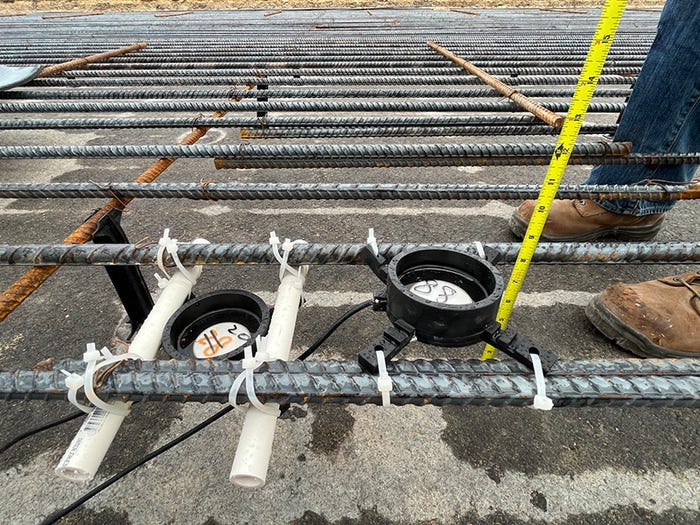Sensors in Poured Concrete Create ‘Smarter’ RoadsSensors in Poured Concrete Create ‘Smarter’ Roads
‘Talking concrete’ informs engineers of its strength; planned for US interstates

Researchers have created a system of using sensors in concrete roads to measure the strength of the concrete.
The technology has been developed at Indiana’s Purdue University and involves sensors embedded directly into concrete when it is being poured for use in the construction of roads.
The ‘talking concrete’ then can inform engineers of its strength is to be tried on several U.S. interstates, giving a new meaning to the term smart road.
Once in place and active, the sensors are able to provide more accurate data about the concrete’s status than current methods.
This could bring tangible benefits, preventing unnecessary roadworks and subsequently reducing congestion, lowering emissions and saving taxpayers money.

“Traffic jams caused by infrastructure repairs have wasted 4 billion hours and 3 billion gallons of gas on a yearly basis,” said Purdue’s acting head of civil engineering Luna Lu, who has led the development of the sensors since 2017. “This is primarily due to insufficient knowledge and understanding of concrete’s strength levels.”
More than half the states that have concrete interstate highways – Indiana, Missouri, North Dakota, Kansas, California, Texas, Tennessee, Colorado and Utah – have signed up for a study to use the sensors, with more expected to follow.
The sensors have the potential to revolutionize road construction techniques. While currently samples of concrete are tested at a lab to determine strength level, there is an element of trial and error to the process. What the states will be using, though, is technology that monitors the fresh concrete and accurately measures its properties.
The sensors are installed simply by throwing them onto the ground of the concrete formwork and covering them with concrete. Then a sensor cable is plugged into a reusable handheld device that logs data. The sensor lets engineers know, via a smartphone app, exactly when the road is strong enough to handle heavy traffic.
Another benefit is that this data can potentially be used to reduce the amount of cement in concrete mixes, which could be a major boost for the environment.
Cement manufacturing has a massive carbon footprint, but Lu has founded a start-up, Wavelogix, which has developed a proprietary IoT sensing and data analytics platform to help optimize concrete mixes based on the information provided by the sensors.
“The biggest problem with concrete mixes is that we use more cement to increase the concrete’s strength,” she said.
The ‘talking’ concrete is the latest example of the increasing ability of infrastructure to communicate, which could radically change transportation.
In Georgia, Peachtree Corners – a smart city that has been created around 20 miles north of Atlanta – is leading the way in terms of showing exactly what is possible.
The city has evolved as a center for major companies to assess their IoT technologies, and features an array of smart buildings, connected roadways, sensors and cameras all working in tandem to provide a superior, high-tech transport experience.
About the Author
You May Also Like








